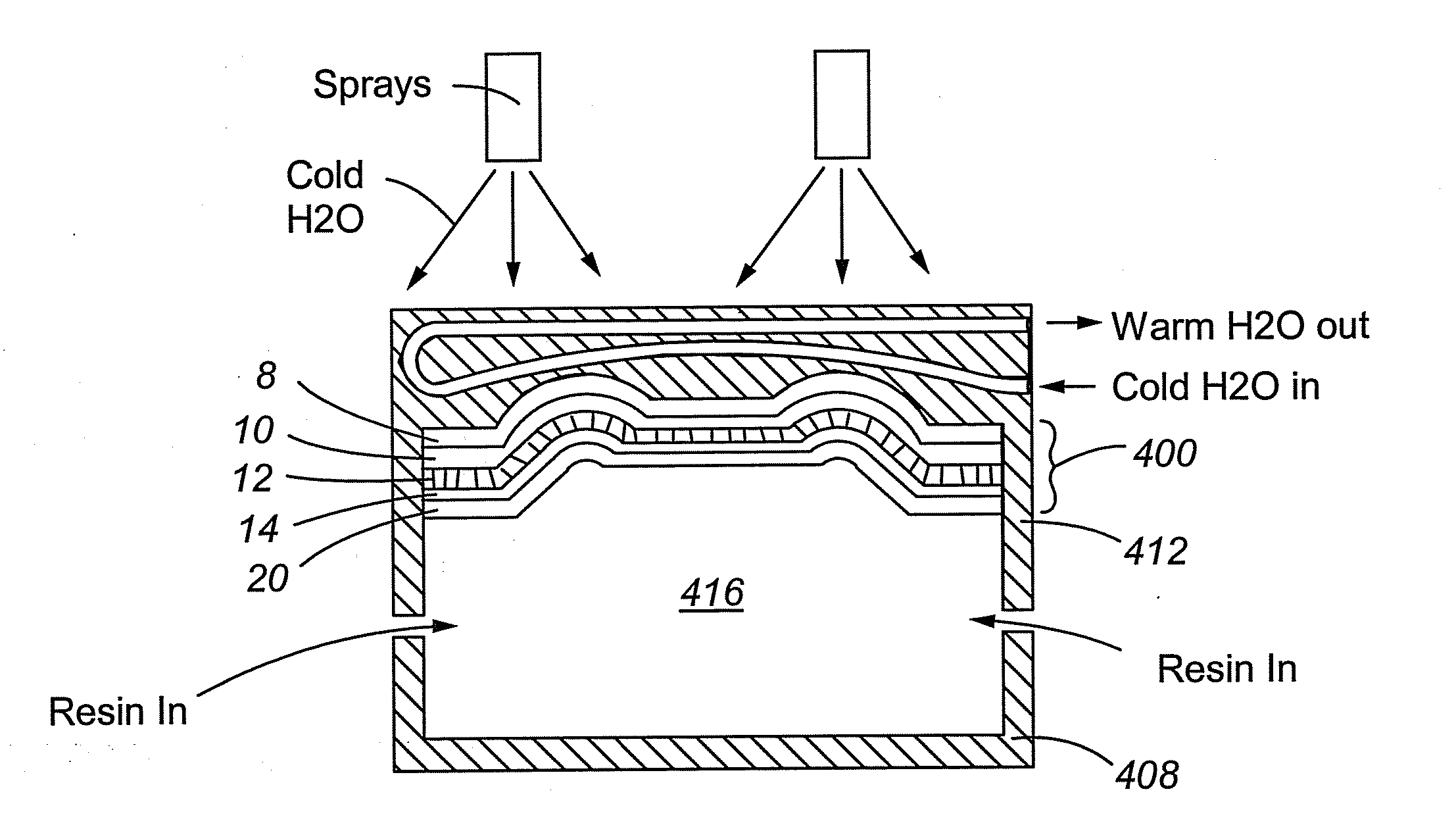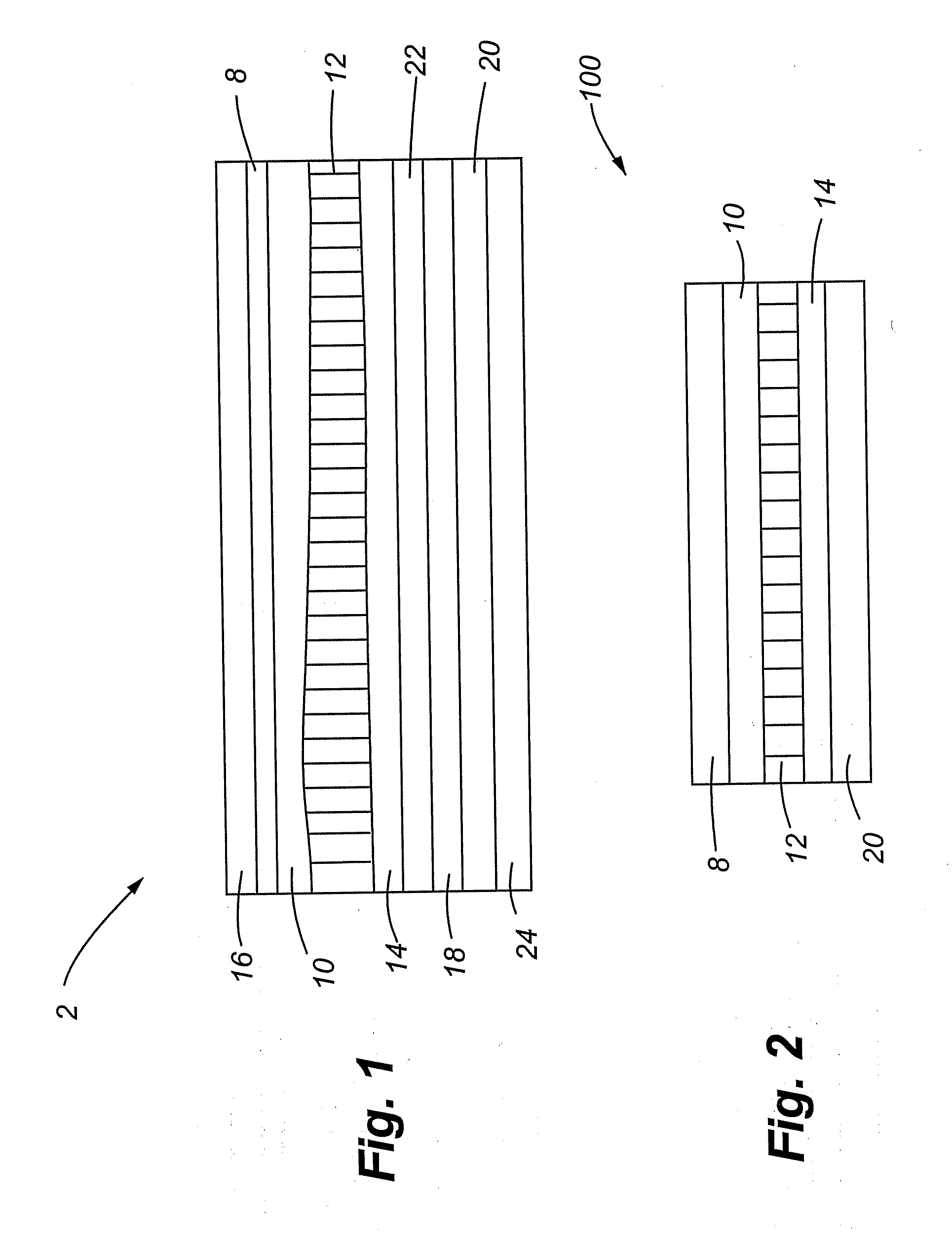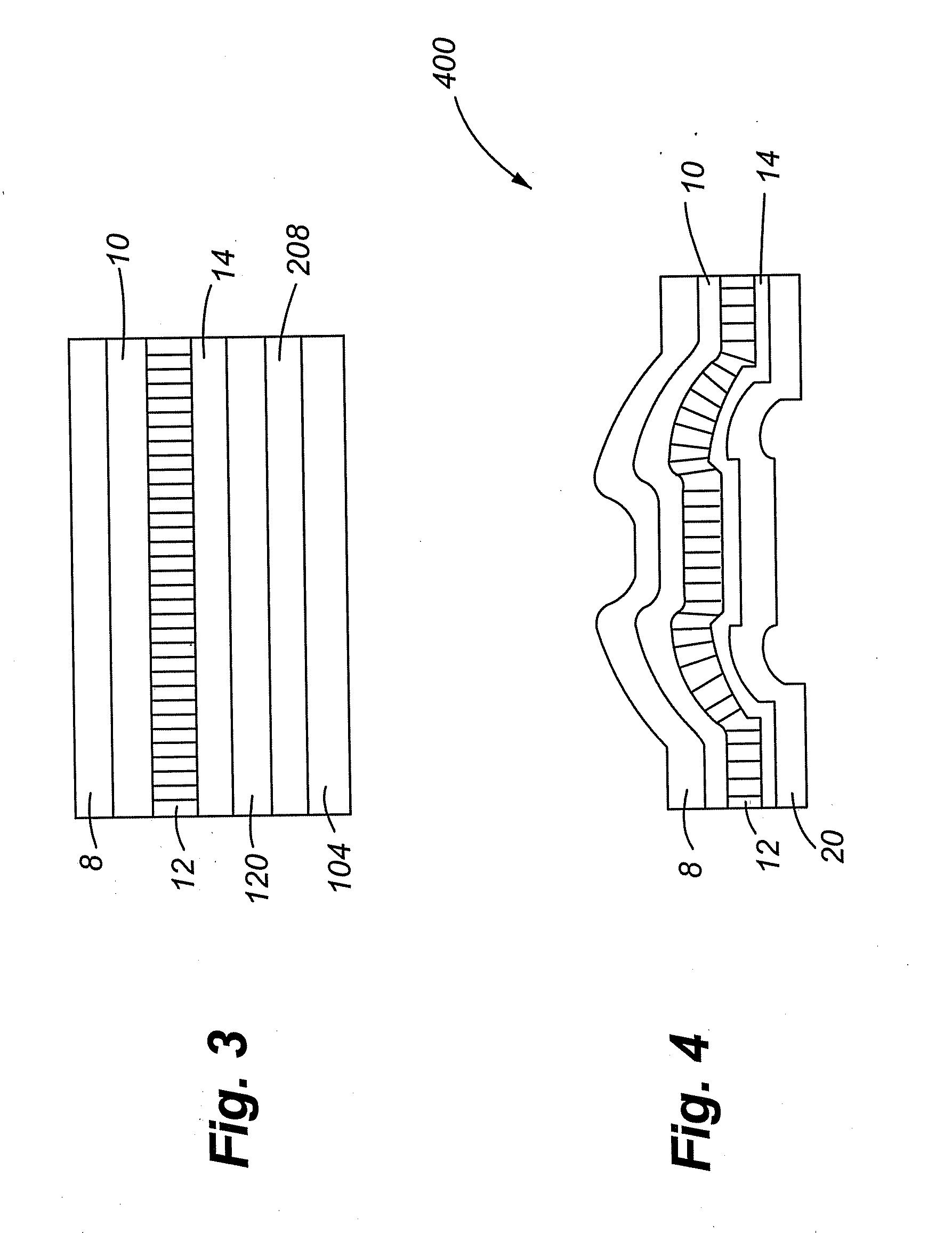Heat moldable flock transfer with heat resistant, reusable release sheet and methods of making same
a technology of heat-resistant and reusable release sheets, which is applied in the field of molded articles with flocked surfaces, can solve the problems of increasing increasing the cost and time of processing and reprocessing, and increasing the cost of imd technology, so as to reduce the operating cost of molded articles and modest capital investment.
- Summary
- Abstract
- Description
- Claims
- Application Information
AI Technical Summary
Benefits of technology
Problems solved by technology
Method used
Image
Examples
Embodiment Construction
[0024] In one embodiment, a flock heat transfer type media is used rather than ink-printed film inserts or decorations to provide a plush, evenly-coated, three-dimensional single or multi-colored textured decoration that is molded together with the hot resins when the article is formed. Using flock transfer media, a plushly textured decoration is permanently attached to the surface of the molded article. To accomplish this without the risk of burning or heat damaging the flock fibers, a reusable, heat resistant release sheet is utilized such that it contacts first ends of the flock fibers, which first ends are opposing the ends of the flock fibers contacting the permanent adhesive. The heat resistant release sheet preferably completely covers the flock fibers. The heat resistant release sheet may be utilized during a thermoforming step of the flock transfer media, before it is inserted into the mold, to prevent burning or heat damage to the flock fibers from the temperatures experie...
PUM
| Property | Measurement | Unit |
|---|---|---|
| melting temperature | aaaaa | aaaaa |
| melting temperature | aaaaa | aaaaa |
| glass transition temperature | aaaaa | aaaaa |
Abstract
Description
Claims
Application Information
 Login to View More
Login to View More - R&D
- Intellectual Property
- Life Sciences
- Materials
- Tech Scout
- Unparalleled Data Quality
- Higher Quality Content
- 60% Fewer Hallucinations
Browse by: Latest US Patents, China's latest patents, Technical Efficacy Thesaurus, Application Domain, Technology Topic, Popular Technical Reports.
© 2025 PatSnap. All rights reserved.Legal|Privacy policy|Modern Slavery Act Transparency Statement|Sitemap|About US| Contact US: help@patsnap.com



